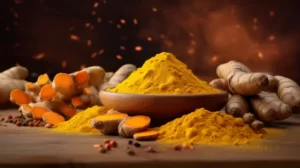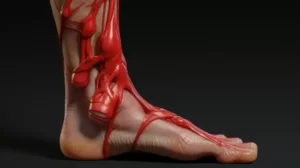Cannabis, the once-demonized plant that whispered to humanity from the shadowy fringes of illegality, might just be the ancient healer we never knew we had. Imagine a medicine so potent yet so misunderstood, that it could lie dormant under layers of controversy, only to be re-discovered amidst a new era of scientific inquiry. It is a substance that has adorned the pages of history from the venerated tombs of pharaohs to the medical journals of Victorian doctors. Yet, what is most astonishing is how the rise of modern medicine nearly erased it from medical consciousness.
Now, picture this: you are one of the millions trapped in the gnawing, relentless grip of chronic pain, your daily life a battleground where the simple act of getting out of bed becomes a Herculean effort. Traditional medications promise solace but often at the price of dependency and a myriad of side-effects that leaves one questioning if the cure is worth it. This is the stark reality chronic pain sufferers face every waking moment.
Enter cannabis, a plant with a litany of compounds, with THC and CBD leading the charge as the most notable for their therapeutic properties. The role of cannabis in pain relief is far from a modern concept. Ancient texts from China and Egypt indicate that it was used for gynecological issues, toothaches, and general pain relief thousands of years ago.
However, modern science beckons us to look beyond anecdotal evidence. It calls for rigorous, empirical evidence that can stand the test of peer reviews and scientific scrutiny. The good news is that research is surfacing, and it is painting a rather intriguing picture of cannabis’s potential in managing chronic pain.
Studies, such as those published in the Journal of Pain Research, suggest that cannabinoids—the active chemicals in cannabis—can modulate pain by interacting with the body’s endocannabinoid system. This system plays a pivotal role in regulating a range of functions including pain, mood, and appetite. Essentially, cannabis compounds can influence pain pathways in both the peripheral and central nervous systems, offering a double-barreled approach to battling pain.
CBD, the non-psychoactive sibling of THC, has been lauded for its anti-inflammatory properties. This is crucial because chronic pain often stems from inflammation. The allure of CBD lies in its ability to offer pain relief without the intoxicating effects associated with high THC strains, a particularly comforting aspect for those who wish to stay clear-headed.
Apart from tinkering with our internal chemistry, cannabis tackles another facet that is often overlooked in the chronic pain conversation: mental health. Pain does not affect the body in isolation; it creeps into the psyche, often exacerbating conditions like depression and anxiety. Studies have shown that the right cannabis strains can act as mood stabilizers, lending a hand to those who are struggling with the psychological toll of their physical pain.
What’s more, an interesting phenomenon has been observed where chronic pain sufferers report a subjective reduction in their pain when using cannabis. This could be attributed to the potential for cannabis to alter the emotional response to pain, making it more manageable, which could be just as significant as the pain relief itself.
However, the path to using cannabis for pain management is laced with complexities. Firstly, not all cannabis is created equal. The plant boasts hundreds of strains, each with varying levels of THC, CBD, and other cannabinoids. One individual’s miracle strain could be another’s sleepless night.
Secondly, we stand at the tip of the iceberg when it comes to understanding the full spectrum of how cannabis interacts with pain responses in the body. While studies are promising, medical professionals advocate for cautious optimism—more research is needed to create a detailed framework for its application in pain management.
If you are contemplating the cannabis route to address your chronic pain, it is critical to begin with a dialogue with your healthcare provider. Understand the laws in your region, considering that cannabis still treads on a tightrope of legal ambiguity in many places. Furthermore, it is paramount to seek out reputable sources and dispensaries that provide verifiable, lab-tested products.
In practical terms, it’s advisable to start low and go slow. Micro-dosing is a practice that allows users to fine-tune their cannabis consumption, ensuring they reap the analgesic benefits without overstepping into discomfort. Through a process of trial and reflection, patients can identify a dosing regimen that works in harmony with their body and lifestyle.
No single path exists for navigating the complex labyrinth of chronic pain management, and cannabis may not be the panacea for all. Yet, as testimonials bubble to the surface and the whispers of scientific inquiry grow louder, cannabis emerges as a compelling candidate for those who have yet to find relief in the arms of traditional medicine.
In the midst of our sophisticated drug development and advanced medical technology, a harbinger of old-world healing is making a remarkable comeback. Cannabis, in all its controversial glory, is poised to redefine the healing narrative for chronic pain sufferers. As research progresses and barriers crumble, it beckons us to rethink what we know about pain and the remedies that nature, in its immense wisdom, has bequeathed upon us. Whether cannabis will take its rightful place as a mainstream remedy is a chapter yet unwritten, but for chronic pain sufferers, it may be the glimmer of hope they were scouring the horizon for.



